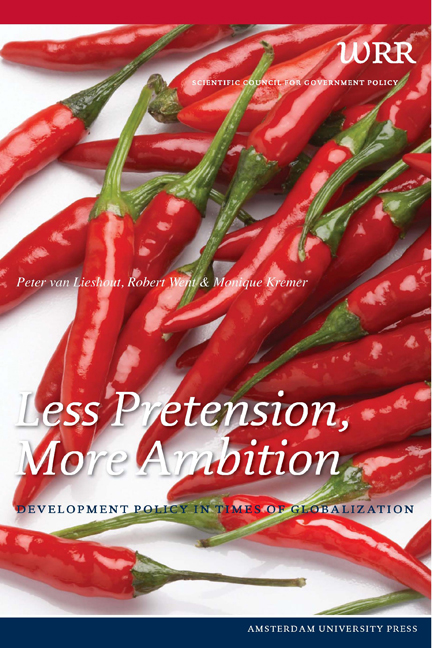Book contents
4 - Measuring Development
Published online by Cambridge University Press: 14 January 2021
Summary
Development is a complex business. While this might be a challenge to commentators and scientists, it is above all a problem for politicians and civil servants, who have the difficult job of explaining such a complicated concept to the man or woman in the street. It is equally difficult to formulate policy and evaluate whether that policy leads to positive results. The latter causes researchers all kinds of headaches. After all, it is their task to throw extra light on the question of where and when aid is useful. The question of how such a question can be answered is key to this chapter.
IS DEVELOPMENT TAKING PLACE?
Describing development is one thing, explaining it in measurable quantities is another. Nevertheless, this is what modern policy systems are expected to do. As a consequence, policy is being made ‘result-oriented’ in dozens of ways. What, on the whole, are the results? Demonstrating the achievement of development is easy if specific welfare indicators are taken as the criteria, but much trickier if other indicators are used. Welfare indicators, particularly in the field of healthcare, education, nutrition and political and social rights (including the position of women and children) present a predominantly positive picture. However, indicators which are socioeconomic in nature project a more diffuse picture. Although there are successes in this respect, these are very unequally distributed. There are major differences in both the degree to which poverty decreases and the level of economic growth, between both regions and population groups within countries.
The fact that specific indicators reveal substantial changes is one thing. The question of what causes these changes is another. The logical follow-up question is to what extent development aid was the decisive factor in bringing about those changes? Let us first examine the development indicators themselves. Anyone who wants to present successful types of development had better focus on healthcare, education and agriculture. In these areas the rate of change in developing countries has been substantially higher during the past half century than was ever the case in Western Europe (Maddison 2001). For example, life expectancy in developing countries appears to have increased by ten years between 1970 and 2005, and even by twenty years since 1950. That still leaves them twenty years behind Western countries, but they are making quicker progress.
- Type
- Chapter
- Information
- Less Pretension, More AmbitionDevelopment Policy in Times of Globalization, pp. 87 - 104Publisher: Amsterdam University PressPrint publication year: 2010



